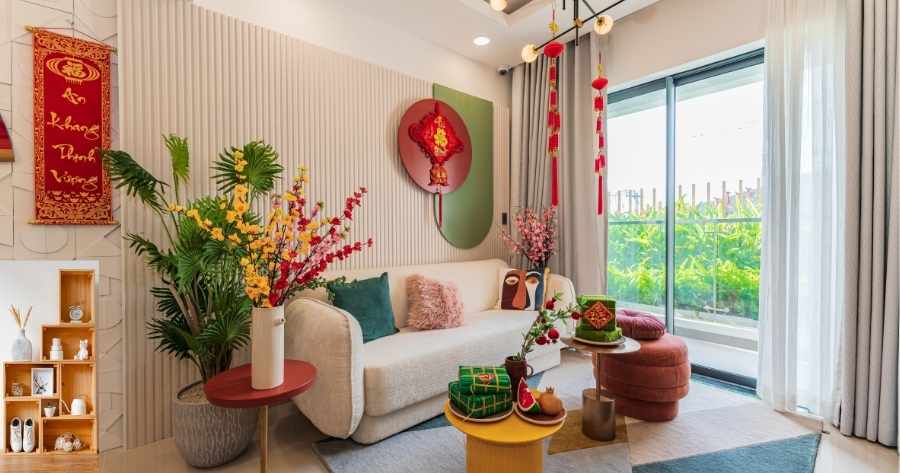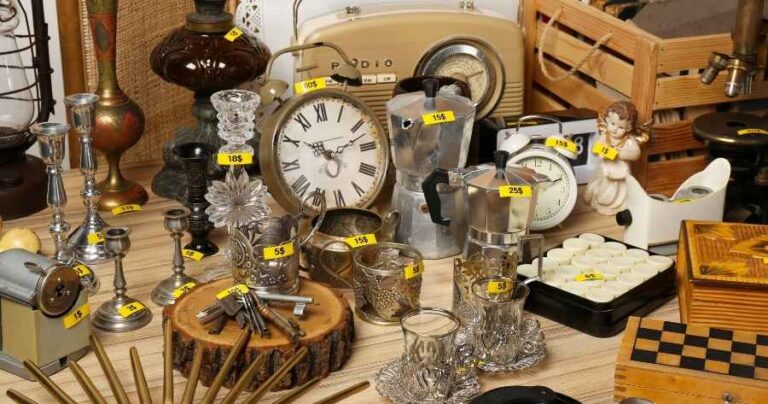
Home decor has always been more than just paint colors and furniture placement. The way we design our living spaces reflects our culture, aspirations, and even the times we live in. In the 2020s, global events such as the pandemic, climate awareness, and rapid technological innovation have dramatically changed what we expect from our homes. By 2025, we’ve moved firmly into an era where comfort, sustainability, and personality are at the heart of design.
The old obsession with Instagram-perfect minimalism and sterile white interiors is giving way to something richer, warmer, and more human. People want homes that tell a story not just homes that look like they belong in a catalog. At the same time, technology has embedded itself in our daily lives, meaning smart design is no longer optional but essential.
This article dives deep into what’s trending in 2025 home decor and what’s fading out. We’ll explore how sustainability, curves, colors, and cultural influences are reshaping interiors and also examine which old favorites are finally being retired. Whether you’re renovating, redecorating, or just curious, this guide will help you stay ahead of the curve while still making your space feel authentically yours.

What’s In: The Hottest Decor Trends for 2025
1. Sustainable and Eco-Friendly Materials
Sustainability is no longer a buzzword, it’s a lifestyle necessity. In 2025, eco-conscious living has reached mainstream home design. People are choosing materials that minimize environmental impact, such as:
- Recycled woods and metals -furniture crafted from reclaimed oak, walnut, or even repurposed industrial steel.
- Bamboo and cork -fast-growing, renewable materials for flooring and decor.
- Natural stone and clay– timeless, durable, and low-waste.
This isn’t just about environmental virtue-signaling; sustainable choices also bring warmth and authenticity to interiors. Handcrafted, imperfect pieces are prized because they tell a story of human touch, contrasting with mass-produced fast furniture.
Why It’s Trending:
- Growing climate awareness.
- Shifts toward “buy less, buy better.”
- Younger generations (Millennials, Gen Z) demanding ethical options.
How to Incorporate It:
- Swap particleboard furniture for reclaimed wood.
- Choose natural fiber textiles like jute, linen, or hemp.
- Add clay vases or handmade ceramics to bring tactile authenticity.
2. Earthy, Warm Color Palettes
For years, cool grays and sterile whites dominated. But in 2025, the pendulum has swung toward warmth and comfort. Interior designers are embracing palettes rooted in nature and earthiness:
- Clay, terracotta, and ochre.
- Muted greens and moss tones.
- Soft browns, taupes, and sand.
These colors create cozy, grounded spaces, perfect for a time when people crave stability and relaxation at home. Unlike stark whites, earthy tones feel welcoming and forgiving, allowing for layered textures and personal touches.
Psychology of Color:
Warm tones reduce stress and make rooms feel intimate. In an age where wellness is central, colors that soothe are in high demand.
How to Use It:
- Paint accent walls in terracotta.
- Introduce green through textiles or indoor plants.
- Pair warm tones with natural wood finishes for a timeless look.
3. Smart & Functional Furniture
The “smart home” is no longer futuristic, it’s here. In 2025, furniture itself is becoming tech-integrated and multifunctional:
- Smart sofas with built-in chargers and wireless speakers.
- Adjustable desks with AI posture correction.
- Beds with sleep-tracking tech.
Beyond tech, functionality is king. People want pieces that adapt to smaller urban living spaces: foldable dining tables, modular shelving, and furniture that doubles as storage.
Why It’s Trending:
- Urban living = smaller homes.
- Remote work culture demanding ergonomic solutions.
- Tech integration becoming seamless and invisible.
How to Incorporate It:
- Invest in modular furniture that can expand or shrink.
- Use smart lighting systems with voice or app control.
- Choose pieces that serve at least two functions.
4. Curves and Organic Shapes
The rigid, boxy furniture of the 2010s is being replaced by softer, curvier designs in 2025. Think rounded sofas, circular mirrors, oval coffee tables, and arched doorways.
Curves bring a sense of flow and comfort, mimicking natural forms. They also feel more approachable, contrasting with the cold, sharp edges of industrial design.
Inspiration Sources:
- The retro 1970s revival.
- Biophilic design (bringing nature indoors).
- Scandinavian hygge aesthetics.
How to Use It:
- Replace rectangular rugs with circular or organic-shaped rugs.
- Add a curved armchair or rounded headboard.
- Use arched shelving or doorways to soften architectural lines.
5. Maximalist Touches
Minimalism isn’t dead, but maximalism is back with a twist in 2025. Instead of clutter, think intentional layering: bold patterns, eclectic art, mixed textures, and curated collections that reflect personality.
Examples:
- Mixing velvet cushions with woven throws.
- Displaying books, plants, and personal artifacts on shelves.
- Bold wallpaper patterns paired with neutral furniture.
Maximalism in 2025 isn’t about chaos, it’s about storytelling. A home should look lived in, personal, and expressive, not like a sterile showroom.
How to Incorporate It:
- Choose one bold element (a patterned rug, a gallery wall) and build around it.
- Mix high and low pieces- a vintage lamp with a modern sofa.
- Layer textures: silk, linen, wood, ceramics.
6. Wellness-Focused Spaces
Wellness has become central to design. By 2025, homes are increasingly seen as sanctuaries for mental and physical health.
Trending Features:
- Home spas- rainfall showers, freestanding tubs, aromatherapy.
- Meditation corners with soft lighting and cushions.
- Indoor gardens- vertical planters, hydroponics.
- Air-purifying plants integrated into design.
Why It’s Growing:
- Post-pandemic focus on self-care.
- Increased stress in modern life.
- Desire for homes to support holistic health.
How to Create It:
- Dedicate a small nook to mindfulness with floor cushions and candles.
- Use natural scents and calming lighting.
- Add greenery for air quality and visual peace.
7. Global-Inspired Accents
Cultural diversity is thriving in home design. In 2025, homeowners are bringing global influences into interiors, not as novelty but as celebration.
Examples:
- Moroccan zellige tiles.
- Japanese wabi-sabi minimalism (beauty in imperfection).
- African mud cloth textiles.
- Mediterranean pottery and arches.
Global accents make homes feel unique and worldly. They also encourage ethical artisan shopping, connecting design to community.
How to Use It:
- Add a Moroccan rug as a statement piece.
- Decorate with handwoven baskets from African artisans.
- Incorporate Japanese ceramics in kitchen displays.
What’s Out: Trends Fading in 2025
1. All-White Interiors
Sterile white-on-white is fading. It feels cold and impractical, especially for families. Warmth and personality are now preferred.
2. Fast Furniture
Cheap, disposable furniture is declining as people invest in sustainable, long-lasting pieces.
3. Minimalism Overload
Bare walls and soulless spaces are being replaced by curated maximalism.
4. Industrial Harshness
Exposed pipes and raw cement are softening in favor of organic, natural finishes.
5. Open Shelving Everywhere
Open shelving is beautiful but impractical — dust and clutter fatigue are driving a return to closed smart storage.
Practical Tips to Refresh Your Home for 2025
- Start Small: Swap textiles (curtains, rugs, cushions) for earthy tones.
- Bring Nature In: Add plants or natural wood accents.
- Mix Old and New: Blend vintage finds with modern sustainable pieces.
- Layer Textures: Combine linen, velvet, clay, and wood for depth.
- Adopt One Trend at a Time: Avoid chasing all trends; choose what resonates with your lifestyle.
Conclusion
The home decor trends of 2025 emphasize authenticity, comfort, and sustainability. The sterile minimalism of past years is giving way to warmth, curves, bold expression, and global influences. Tech and wellness integrate seamlessly, making homes smarter and healthier.
But here’s the golden rule: don’t just follow trends; adapt them. Your home should reflect your life, values, and personality. Whether you adopt terracotta walls, curved sofas, or global accents, the goal is to create a space where you feel at ease, inspired, and at home.
2025 is the year of homes with soul.




